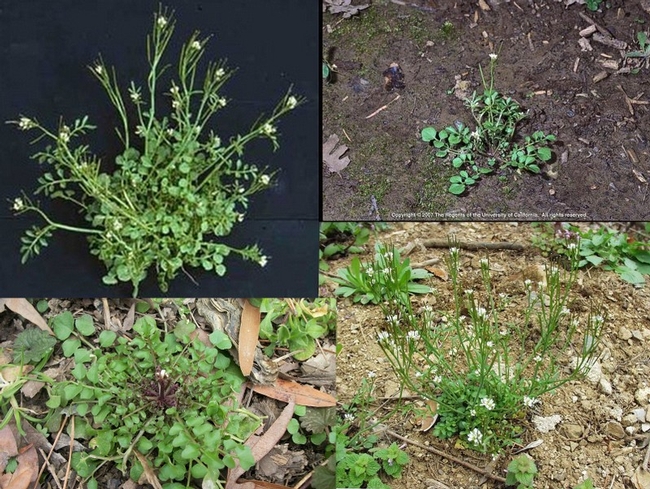From the UC Blogosphere...
How Many Bumble Bees Have You Seen This Year?
Quick! How many bumble bees have you seen so far this year? For me, it's zero, zilch, nada. They're out there, though....
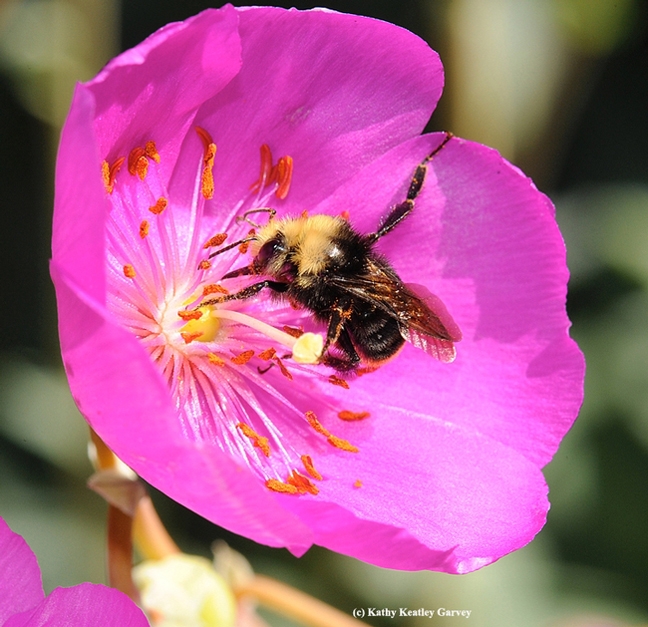
The yellow-faced bumble bee, Bombus vosnesenskii, on rock purslane. (Photo by Kathy Keatley Garvey)
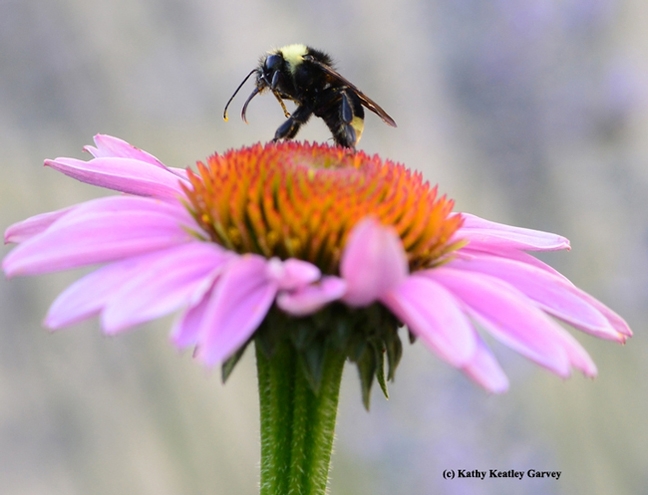
A black-faced bumble bee, Bombus fervidus (formerly Bombus californicus) on a coneflower. (Photo by Kathy Keatley Garvey)
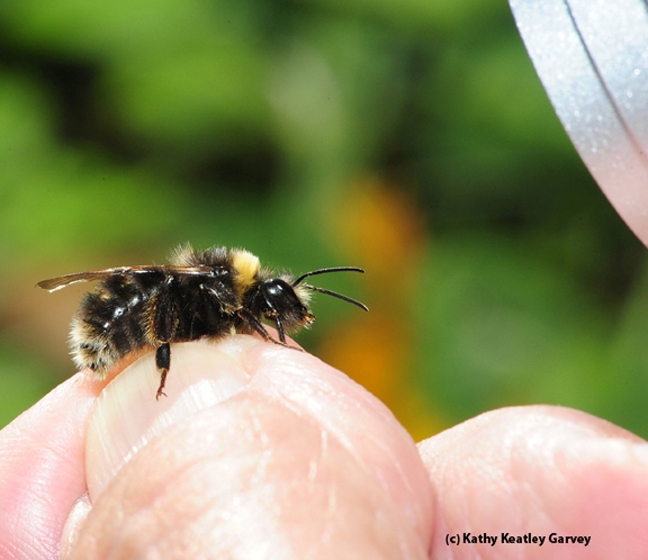
This is the Western bumble bee, Bombus occidentalis, which is declining rapidly. (Photo by Kathy Keatley Garvey)
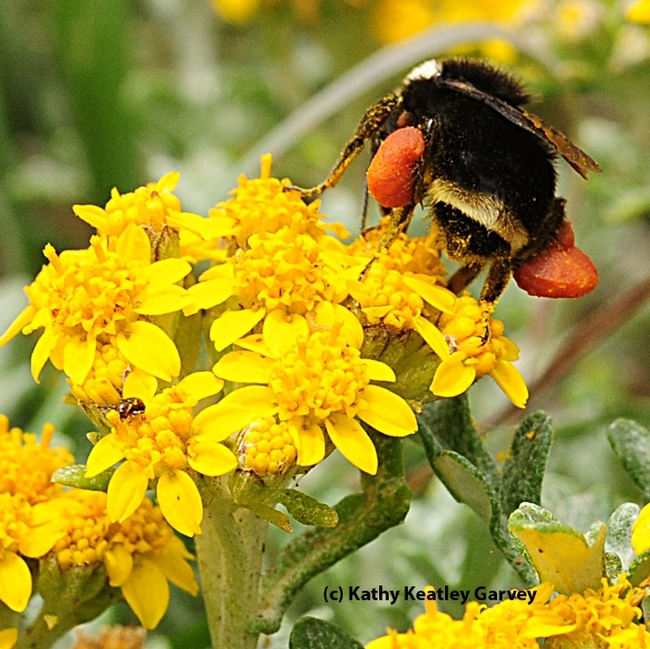
The yellow-faced bumble bee, Bombus vosnesenskii, with a load of red pollen. (Photo by Kathy Keatley Garvey)
My Favorite Weed.... NOT!!!
Hairy Bittercress (Cardamine hirsuta)
I've become fascinated with this weed, at least so far. I've more-or-less got it under control in my garden. I really don't remember it from years ago, but it sure has been a pest the last 5 years or so. Not a native of California, it is now here for the foreseeable future… and beyond. I can't say it's the worst weed in the garden, but it sure requires attention to keep it under control. Especially these days when it will be competing for available water.
Because Hairy Bittercress thrives in moist conditions and disturbed soil, it is also a pest in nurseries, and can be brought home via plant purchases. If you think that's a problem for you, some cautious gardeners carefully remove the top inch or two of soil in the pots before planting. (If you do this, you should dispose of the scraped-off soil in your green can.)
If all else fails, Hairy Bittercress is a member of the mustard family and is edible, but you need to do your own research to find the right recipe to enjoy it (for an example, see http://www.eatingniagara.com/2013/04/weed-wednesday-make-that-hairy.html). To get ahead of its persistence in the garden, it's definitely worth patrolling your garden for this weed once or twice a week during the winter and spring. It's easy to hand pull when young. Once the seeds pop, you'll be fighting a much bigger crop next year and it's rare that herbicides would be considered appropriate for control in a home garden.
Another reason it's my “favorite” weed? I still remember a fellow student in our Master Gardener class relating how she had “convinced” her young son to help weed the spring garden and he was complaining about the weed seeds popping in his face. She answered him by telling him to go in the house and get his safety goggles on and keep on weeding… something you might be considering adding to your gardening tools if you let Hairy Bittercress (Cardamine hirsuta) go to flower and reseed.
Steve Morse
Contra Costa Master Gardener
Planting Spring Vegetables
PLANTING SPRING VEGETABLES By Leonard Cicerello UCCE Master Gardener Now is a good...
Daily Life For Master Gardeners
Cold Canyon Landfill By Andrea Peck This week I took a field trip to the Cold Canyon Landfill with my son's class....
Loving the Lupine
It's a given: Honey bees love lupine. We watched them buzzing around a flower patch of blue (lupine) and gold (California...
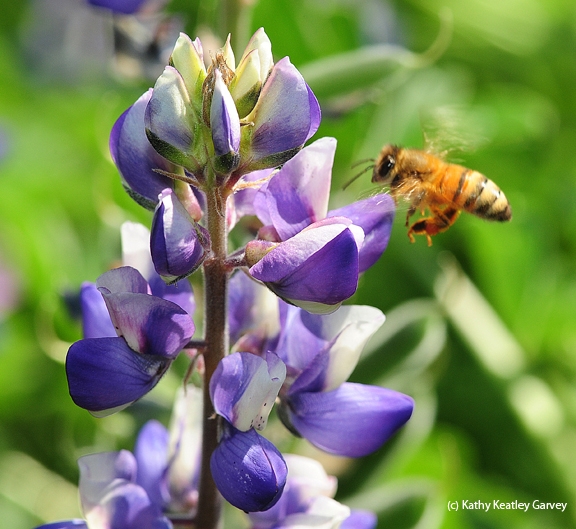
A honey bee heads for lupine. (Photo by Kathy Keatley Garvey)
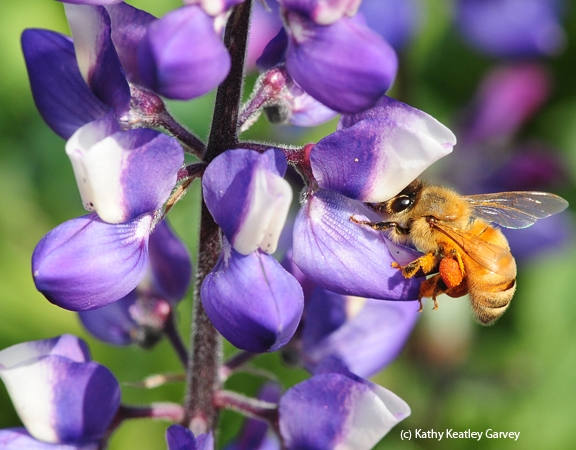
Honey bee with a huge pollen load. (Photo by Kathy Keatley Garvey)
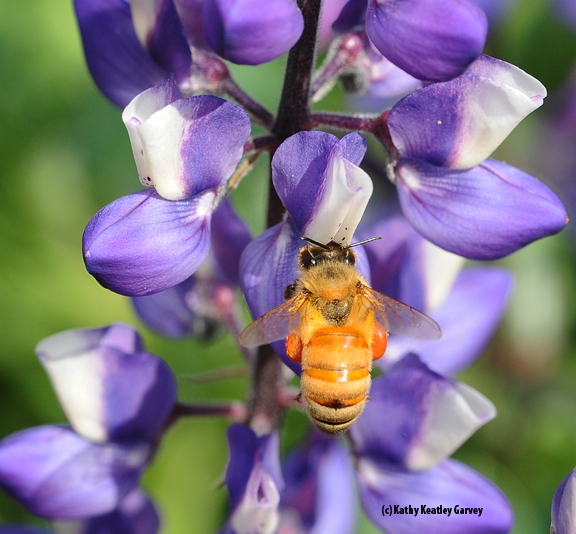
Saddlebags? No, a heavy load of pollen. (Photo by Kathy Keatley Garvey)



